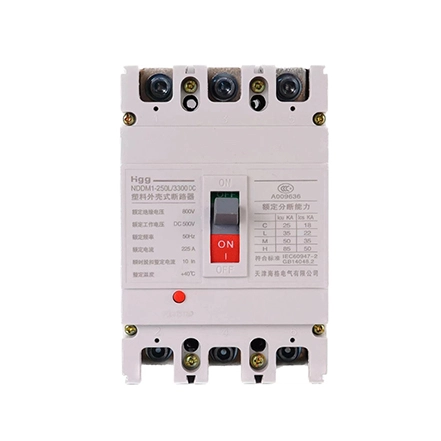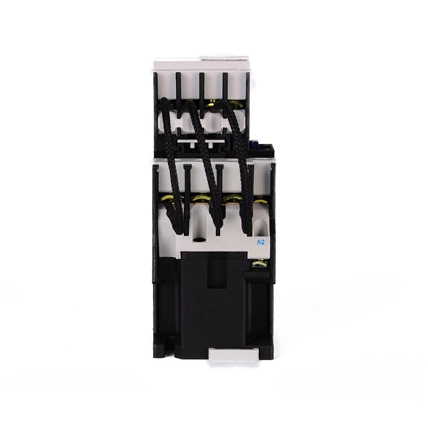Introduction
In the world of electrical systems, safety and efficiency are paramount. One essential component that plays a critical role in maintaining these standards is the Molded Case Circuit Breaker (MCCB). These devices are ubiquitous in various settings, from residential to industrial, ensuring electrical circuits are protected from overloads and short circuits. But what exactly is an MCCB, and how does it function?
What is a Molded Case Circuit Breaker?
A Molded Case Circuit Breaker, or MCCB, is a type of electrical protection device that automatically switches off the electrical circuit during abnormal conditions like overloads and short circuits. Unlike traditional fuses, which need to be replaced after one use, MCCBs can be reset and reused, making them a more convenient and cost-effective solution.
Definition and Basic Structure
At its core, an MCCB consists of a molded case, which is a robust insulating material designed to contain the arc produced during the interruption process. This case houses various components such as the trip unit, operating mechanism, and terminals for connecting to the electrical circuit.
Trip Unit: The heart of the MCCB, responsible for detecting abnormal conditions and triggering the interruption process.
Operating Mechanism: Facilitates the manual or automatic opening and closing of the circuit breaker.
Terminals: Connection points for incoming and outgoing electrical conductors.
How Does a Molded Case Circuit Breaker Work?
Understanding the operation and function of an MCCB involves delving into its trip unit and operating mechanism.
Operating Mechanism
When the MCCB is in the 'ON' position, the electrical circuit is complete, allowing current to flow through. In the event of an overload or short circuit, the trip unit detects the anomaly and activates the operating mechanism, causing the contacts to separate and interrupt the circuit.
Trip Unit Functionality
The trip unit can be thermal, magnetic, or a combination of both. In thermal units, a bimetallic strip heats up and bends, tripping the breaker. In magnetic units, a solenoid generates a magnetic field that trips the breaker during a short circuit.

Types of Molded Case Circuit Breakers and Their Differences
MCCBs come in various types, each suited for different applications and protection requirements.
Thermal Magnetic MCCBs
Thermal magnetic MCCBs combine thermal and magnetic trip units, providing protection against both overloads and short circuits. The thermal trip unit uses a bimetallic strip that bends when heated by the current flow, tripping the breaker during prolonged overloads. The magnetic trip unit uses an electromagnet to trip the breaker instantly during short circuit conditions. These MCCBs are widely used in residential, commercial, and industrial applications due to their reliability and dual protection features.
Electronic MCCBs
Electronic MCCBs utilize advanced electronic sensors and microprocessors to detect faults. These breakers offer precise protection and can be programmed to provide customized trip settings, making them suitable for applications requiring high accuracy and flexibility. They include features like ground fault protection, adjustable trip settings, and communication capabilities for integration with building management systems. Electronic MCCBs are commonly used in critical infrastructure and complex electrical systems where precise and reliable protection is essential.
Hydraulic Magnetic MCCBs
Hydraulic magnetic MCCBs are designed for environments with varying temperatures. Unlike thermal units, which can be affected by ambient temperature changes, hydraulic magnetic MCCBs use a hydraulic mechanism that remains stable regardless of temperature fluctuations. This ensures consistent performance and reliable protection. These MCCBs are ideal for marine, transportation, and military applications, where temperature conditions can vary widely.
| Feature | Thermal Magnetic MCCBs | Electronic MCCBs | Hydraulic Magnetic MCCBs |
| Trip Mechanism | Thermal (bimetallic strip) and Magnetic (electromagnet) | Electronic sensors and microprocessors | Hydraulic mechanism and magnetic field |
| Protection Features | Overload and short circuit protection | Precise and adjustable trip settings, ground fault protection | Consistent performance regardless of temperature fluctuations |
| Applications | Residential, commercial, industrial | Critical infrastructure, complex electrical systems | Marine, transportation, military |
| Temperature Sensitivity | Affected by ambient temperature | Not affected by ambient temperature | Stable performance in varying temperatures |
| Customization and Flexibility | Limited adjustment settings | High customization and programming capabilities | Limited customization |
| Reliability | Reliable for general applications | Highly reliable with advanced features | Highly reliable in harsh environments |
| Cost | Generally lower cost | Higher cost due to advanced features | Moderate cost |
| Maintenance | Requires periodic inspection and maintenance | Requires regular calibration and testing | Requires minimal maintenance |
Conclusion
Molded Case Circuit Breakers are indispensable components in modern electrical systems. When talking about Molded Case Circuit Breaker Functions, this product provides robust protection against overloads and short circuits, ensuring the safety and reliability of electrical circuits across various applications. As technology advances, MCCBs continue to evolve, offering smarter and more efficient solutions for electrical protection.
FAQs of Molded Case Circuit Breaker
1. What is the difference between an MCCB and an MCB?
An MCCB (Molded Case Circuit Breaker) is designed for higher current ratings and offers more advanced protection features compared to an MCB (Miniature Circuit Breaker), which is used for lower current ratings and less demanding applications.
2. How do you reset a tripped MCCB?
To reset a tripped MCCB, first ensure the cause of the trip has been resolved. Then, move the handle to the 'OFF' position and then to the 'ON' position to reset it.
3. Can MCCBs be used for motor protection?
Yes, MCCBs can be used for motor protection. They offer protection against overloads, short circuits, and phase loss, making them suitable for safeguarding motors in various applications.
4. What are the common causes of MCCB failure?
Common causes of MCCB failure include overload conditions, short circuits, mechanical wear, and environmental factors such as dust and moisture.
5. How do you select the correct MCCB for a specific application?
Selecting the correct MCCB involves considering factors such as current rating, trip characteristics, breaking capacity, and the specific requirements of the application. Consulting with an electrical engineer or a professional can also help in making the right choice.





